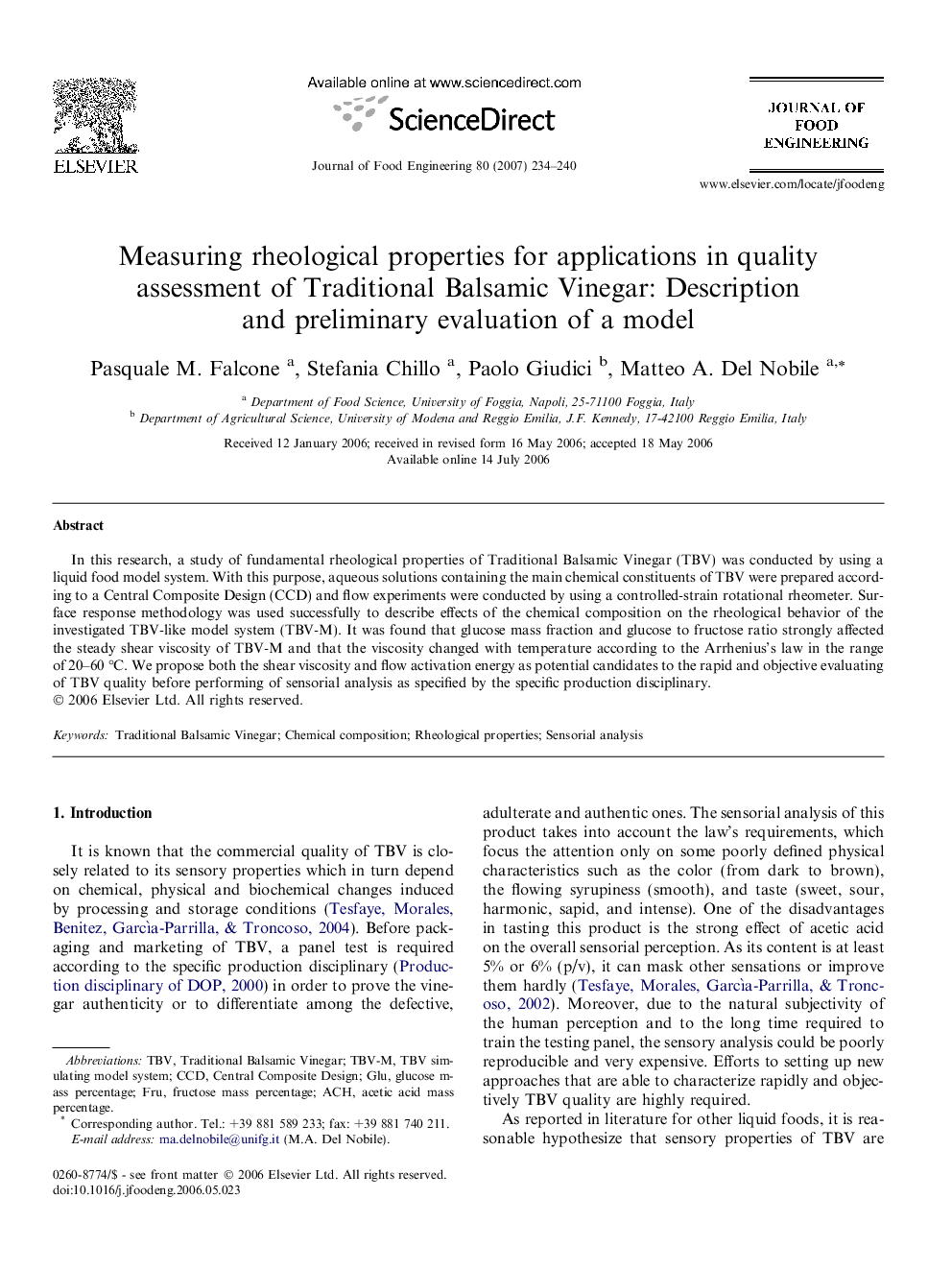| Article ID | Journal | Published Year | Pages | File Type |
|---|---|---|---|---|
| 226320 | Journal of Food Engineering | 2007 | 7 Pages |
In this research, a study of fundamental rheological properties of Traditional Balsamic Vinegar (TBV) was conducted by using a liquid food model system. With this purpose, aqueous solutions containing the main chemical constituents of TBV were prepared according to a Central Composite Design (CCD) and flow experiments were conducted by using a controlled-strain rotational rheometer. Surface response methodology was used successfully to describe effects of the chemical composition on the rheological behavior of the investigated TBV-like model system (TBV-M). It was found that glucose mass fraction and glucose to fructose ratio strongly affected the steady shear viscosity of TBV-M and that the viscosity changed with temperature according to the Arrhenius’s law in the range of 20–60 °C. We propose both the shear viscosity and flow activation energy as potential candidates to the rapid and objective evaluating of TBV quality before performing of sensorial analysis as specified by the specific production disciplinary.
